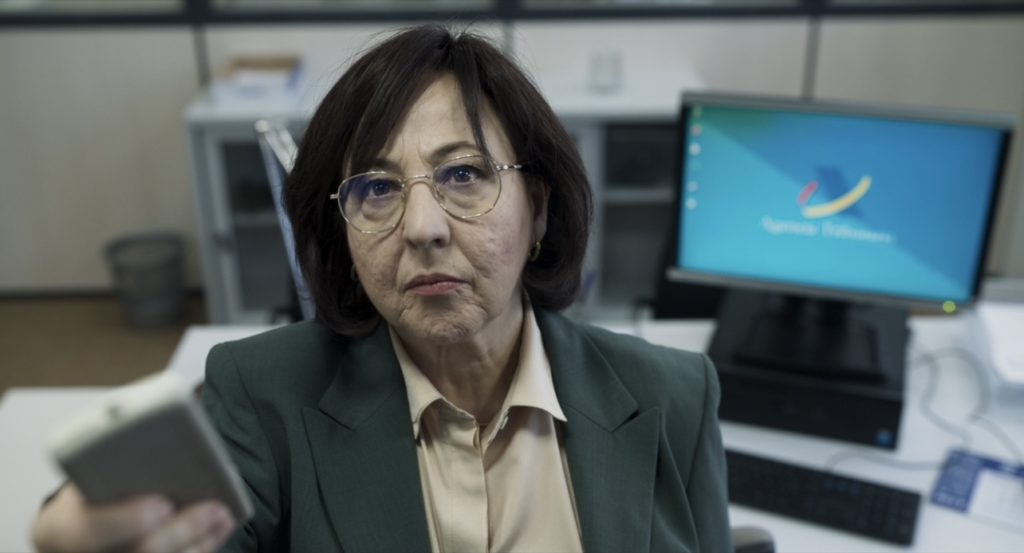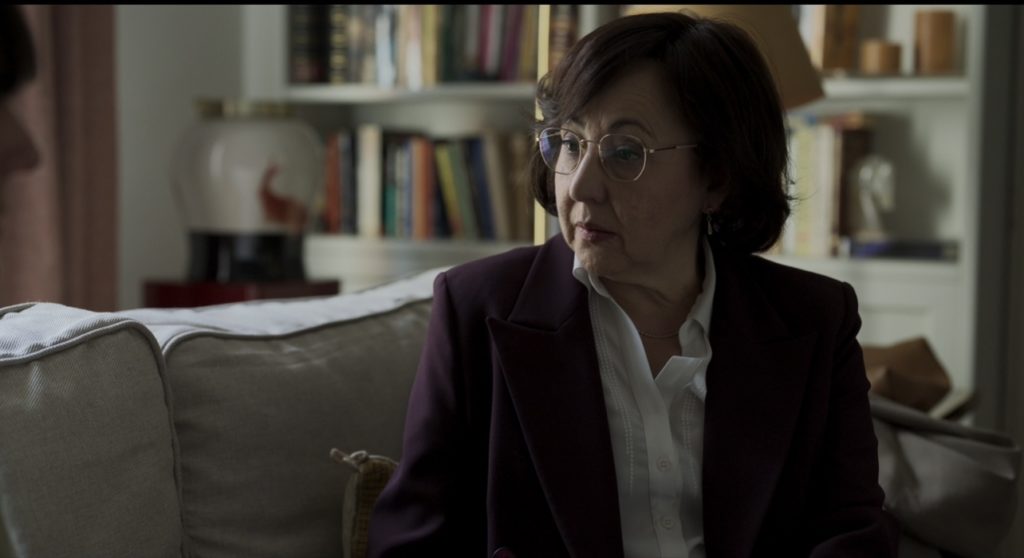1 The aesthetics of Celeste play a fundamental role in conveying the atmosphere of the series. How do you define the visual style you sought to build for the main characters and how did the narrative influence these choices?
I feel it’s a sober style and maybe a bit ‘old fashioned’, I wanted to find something boring in the language of the costumes that didn’t attract too much attention but that didn’t leave you indifferent, that had that ‘something’, even if it was in the colour palette that worked with everything else, a very studied palette of colours that weren’t a current trend. One that you almost don’t notice when you see it but that makes you notice it, even if it’s just by glancing at it.


2 Peris Costumes is known for its wide and varied stock of costumes. How was your experience working with Peris to build the costumes for the main characters and extras? How important was that resource in the development of the design?
As always Peris brought that ‘nosequé’ to the wardrobe, I found costumes from other eras that worked great in terms of cut or colour. Just as for the extras, it helped to create the perfect atmosphere I was looking for.
3 Costumes can be an extension of the characters‘ psychology. How did you translate the characters’ personalities into the visual language of their outfits?
For me this is very important and I talk about it a lot with the directors, in this case with Elena we worked a lot on who Sara (Carmen Machi) was, where she came from and where she was in her life, Elena and I understand each other without almost speaking, she is a very empathetic and close director and we talk for hours about this. For me it is one of the jobs that I most enjoy researching, and I think it comes from not having studied psychology at the time (it was an option) and I am making up for it with this profession that I have chosen.
Sara is at a point in her life where she has dedicated everything to her work and is about to retire, and suddenly this juicy case comes along and she gets that spark again. However, she hardly gives any importance to her wardrobe, her wardrobe has been the same for 30 years and that has to be seen and understood in her attire. Maybe he has changed some jackets, basically out of embarrassment and because they have been worn too much. But in the colour palette I wanted to point out that they are not trendy colours: moss, aubergine, browns or pale pinks… mixed in a somewhat peculiar way. Then I also pay a lot of attention to the hands, in the supermarket or in the market where I go I pay a lot of attention to the hands and jewellery of the ladies, those hands that are weathered with the passage of time and where the rings are already marked from wearing them, the bracelets, the watch, I think that everything tells things and Carmen’s little hands were exactly as I imagined them to be.
Also my mother cooking was one of my references, my mother spends many hours in the kitchen and Sara also cooks a lot despite being alone, she follows the inertia of the mother of the house, and I made a direct reference to her.


4 Costume design in a series is usually a collaborative work, how was your relationship with the art and direction team to maintain the visual coherence of the project?
The relationship with the rest of the teams was great and I think we understood each other very well, the art work deserves a 10 and we met on several occasions to understand the characters and be in sync, it’s true that it’s something that is usually done, but in this sense the coordination with art was wonderful and we were in absolute harmony.




